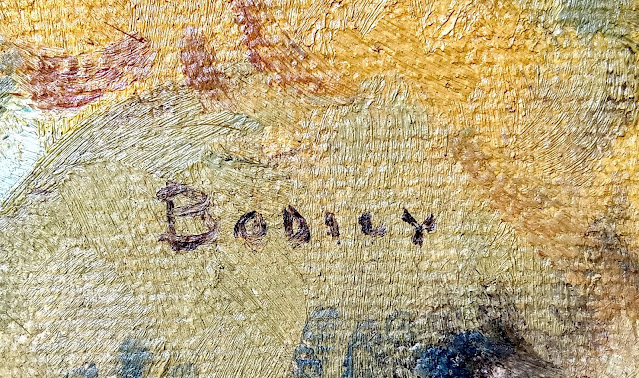. . . is where this rather unique gent with an oddly engaging smile came from. He is a troll, not the Internet kind, but of the ancient and mythical variety.

Trolls trace their origins back to Norse mythology. They were an ancient race who lived in the isolated forests and mountains. Some were giants, some had three heads, and others lived underground, but all were described as ugly, with a rough appearance, oversized nose, and a hairy cow-like tail. Generally they avoided people, but were protective of their woodlands and did not take kindly to trespassers, in some cases even eating unfortunate travelers. Slow-witted and often grouchy, trolls did possess some magical powers. They could place curses on humans who angered them and some were capable of shape-shifting. A troll might turn into a beautiful woman in an attempt to lure a hunter or farm boy into the woods. However, the troll could never disguise its tail and many a young man was saved when he noticed a tail twitching out from under the lovely lady's skirts. Trolls were night creatures and avoided sunlight, which would turn them into stone, and some of the craggy rocks along Norway's fjords or capping its mountains are claimed to be the remains of unwary trolls would failed to reach home by sunrise.

This troll was created by the Norwegian company, Ny Form, founded by Trygve Torgersen. Born in 1924, Trygve graduated from the Kunstakademiet (Art Academy) in 1945 with honors in sculpture. Following his marriage to Evelyn Signora Torgersen, the couple decided to create souvenir figurines and in 1957 started production of Norwegian nisse (elves) and trolls at their home in Oslo. However, most retailers found Trygve's creations too ugly and frightening. Taking advantage of a government program encouraging businesses to relocate to create more employment opportunities, in 1963 the couple moved to Tynset, joined by their daughter and son-in-law. Trygve designed a new line of figures and in 1964 Ny Form officially opened. The new creations, simultaneously ugly and endearing, were an immediate hit. Ny Form trolls are now found in souvenir shops throughout Norway and the trolls are sought after by collectors from all over the world. Crafted from latex, each troll is handmade and painted, often topped with a wild wig of wool or reindeer fur. New models are introduced periodically and older ones retired. Evelyn and Trygve themselves retired in the 1970s, but their daughter and her husband continue to operate the company. This troll is a sizable 21 inches and is a model that was discontinued in 1995.

Norwegian farmers believed that a small troll lived hidden on their farm; if the farmer angered the troll, such as being cruel to his animals or failing to take good care of the land, the troll could sour the cows' milk or wither the crops. To stay on the good side of the irascible troll, the farmer would leave out offerings of the troll's favorite food, porridge with butter. It is still a tradition in Norway to leave a bowl of porridge in the barn or on the porch at Christmas as a gift to the local troll. So with Christmas just around the corner, why not create a new tradition? Instead of an elf on the shelf, you can have a troll with a bowl.
All posted items are for sale at Next-to-New, but things can sell quickly!
16592-170








